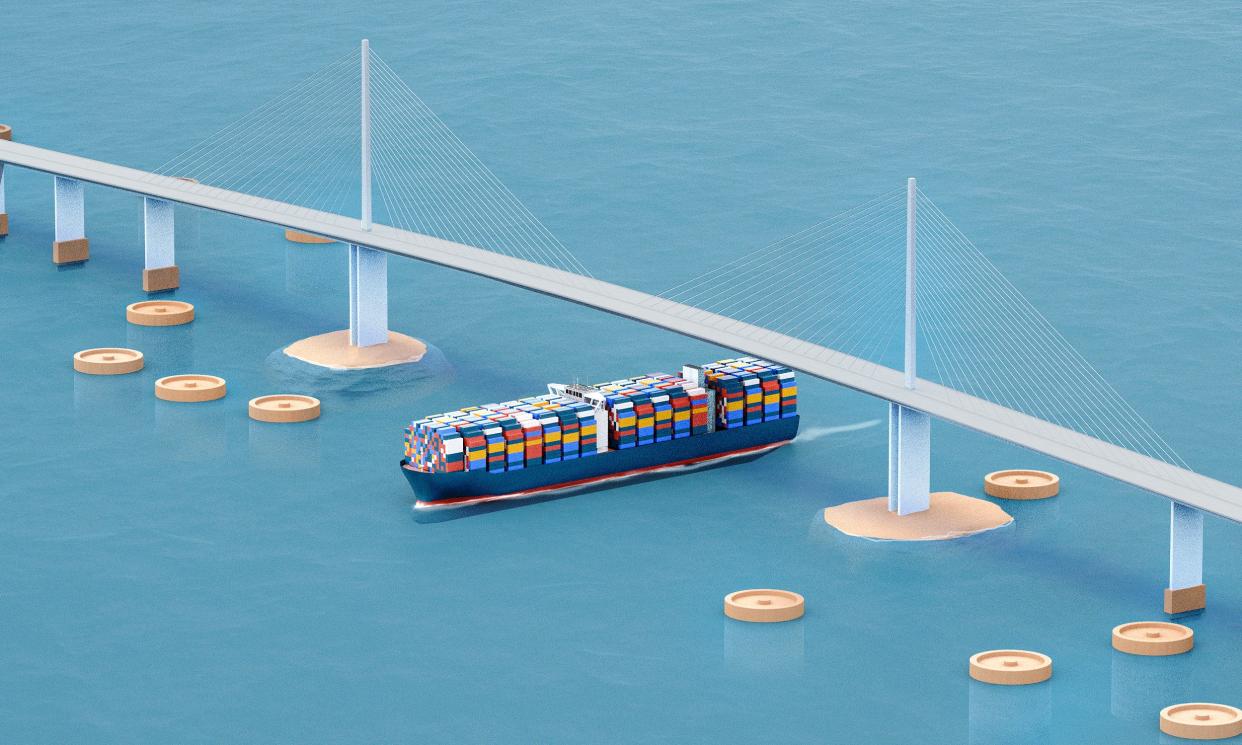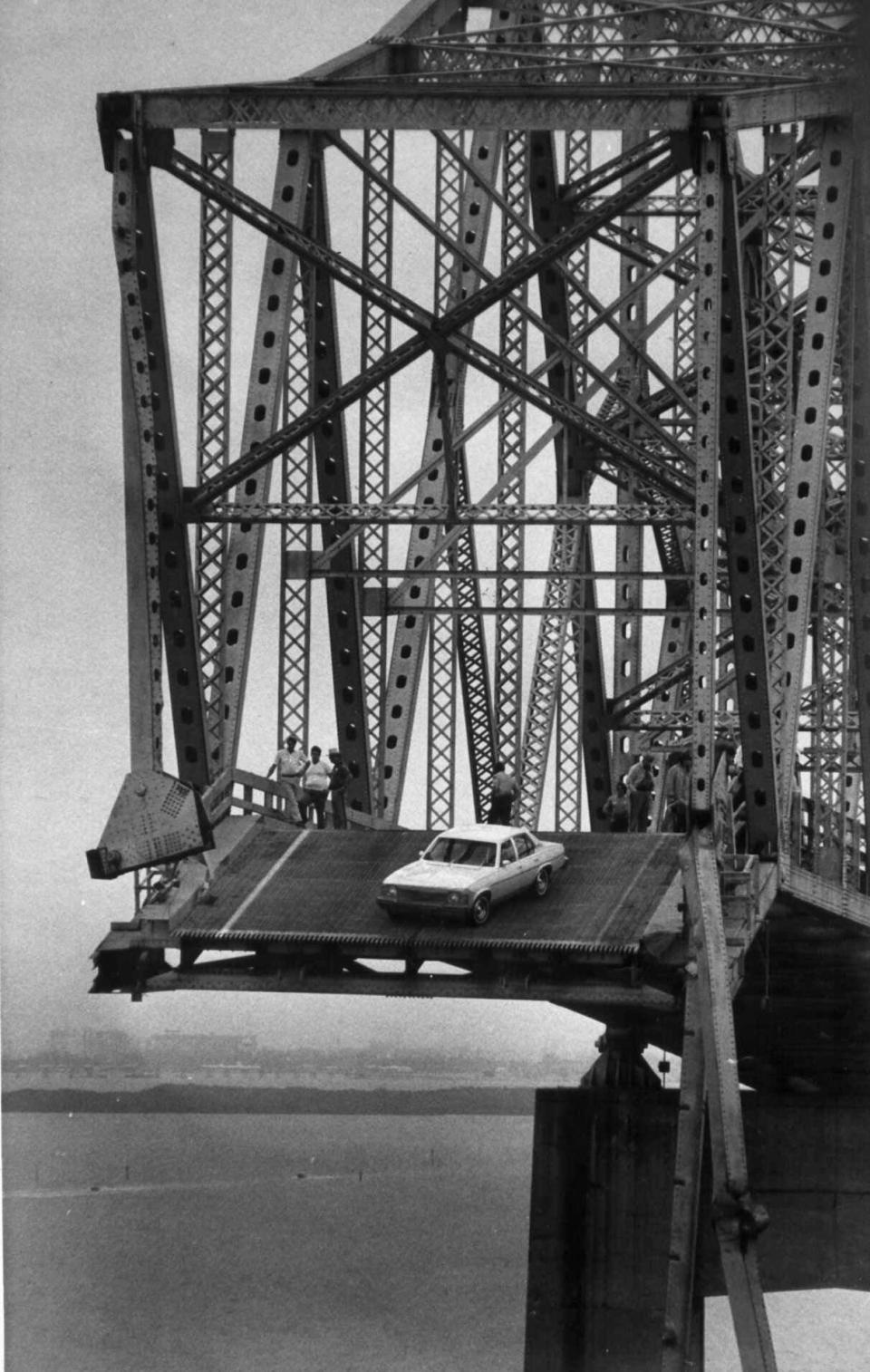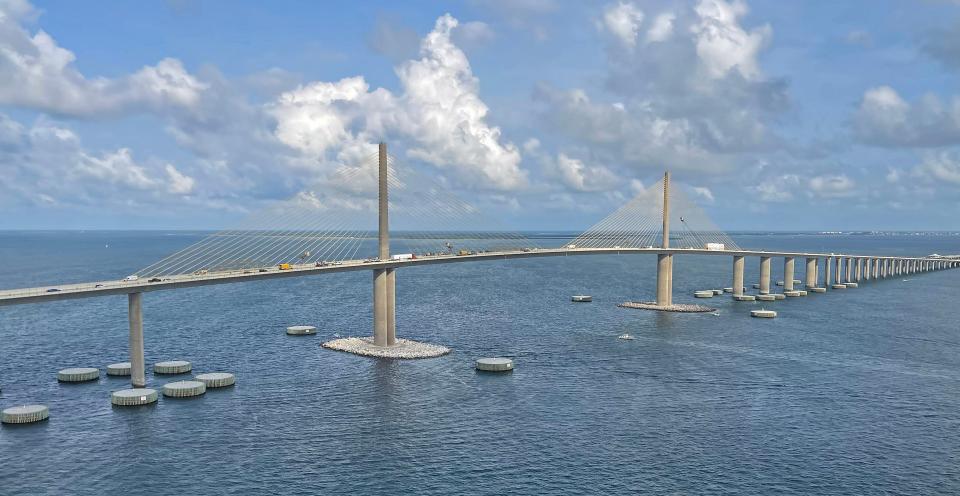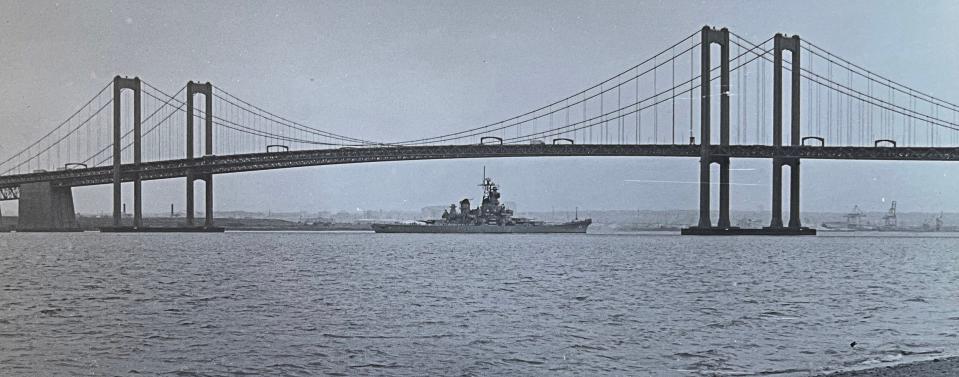Baltimore's Key Bridge, opened in 1977, had few ship defenses. Are modern bridges better?

Not many bridges can take a direct hit from a 95,000-ton ship without crumbling, engineering experts agree. But they also say Baltimore’s Francis Scott Key Bridge, if built today, might have stood a better chance.
Modern bridges don’t look like the Key Bridge, which experts say lacked adequate defenses around its piers. Today's bridges have to be designed to withstand a hit by a ship or have collision protection measures. Modern bridges also tend to be supported by larger pillars and cables. And they come with layers of redundant design, which means the loss of one support won't topple the whole bridge.
The Key Bridge “was never designed to withstand any lateral force that could have possibly come from a ship,” said Sherif El-Tawil, a professor of engineering at the University of Michigan who studies hazard mitigation. “The columns of the A-pier, one of them just snapped under this force, and the other one under the weight of the bridge just collapsed. That’s why the bridge went down so quickly.”
Details surrounding the bridge's collapse and the impact from the Singapore-flagged cargo vessel Dali remain sparse. The National Transportation Safety Board has launched an investigation.
The ship lost power early Tuesday and struck one of the bridge’s support structures. It crumbled almost immediately. Federal authorities say at least six people are presumed dead after they were plunged into the water, and the economic fallout is being felt after the Port of Baltimore was closed.
El-Tawil and other bridge safety experts say more modern bridge designs, like cable-stayed or suspension bridges, would have larger, better-protected piers for their supports. They say these changes were spurred by a similar tragedy, the 1980 collapse of the Florida Sunshine Skyway Bridge, which crossed Tampa Bay. In that case, a ship struck one of the bridge’s support structures, triggering the collapse and killing 35 people.

The new Sunshine Skyway Bridge has rock islands surrounding the bridge supports in addition to several “dolphins,” essentially steel and concrete barriers that sit in the water and are meant to deter boats.
In some cases, massive bridges might be able to withstand the force of a ship’s impact “by virtue of their simply being bigger than the vessel colliding with them,” wrote Kent Harries, a structural engineering professor at the University of Pittsburgh. He cited the Forth Bridge, a rail bridge in Scotland that stretches more than 2,500 meters – about a mile and a half – and was constructed with 53,000 tons of steel. But distance between boats and bridges is often the best defense, he said.

“Fundamentally, I am unaware of many bridges that mitigate the risk of very large vessel collision by ‘brute force,’" Harries wrote. Instead, most bridge designs "isolate in some way (shore, islands, protective shallows) the piers.”
What kind of bridges are being built these days?
Baltimore's Key Bridge, built in the 1970s, was a truss-style bridge. Trusses are usually triangular structures that interlock and support the bridge. They were among the most common types of long-distance bridges built in America for much of the mid-20th century before going out of vogue in the 1980s.
Benjamin Schafer, a professor of civil and systems engineering at Johns Hopkins University, said they have fallen out of fashion for both aesthetic and practical reasons. Germany had many of the world’s notable truss bridges, but they were destroyed during World War II. When the country started rebuilding, Schafer said, it made a deliberate decision not to rebuild truss bridges “because they didn’t want to rebuild Germany to look like Germany.”
Enter cable-stayed bridges. These structures are recognizable by a central pillar with cables stretching downward to support the bridge. Initially, Schafer said, they were more expensive to construct, but over time building methods improved. They started in Germany, spread to Asia, then eventually sprang up in the U.S. later in the 20th century. The first cable-stayed bridge in America is the Florida Sunshine Skyway Bridge. Its previous iteration had been a cantilever bridge, which unlike cable-supported suspension bridges is anchored only on one end with arms extending outward from its supports.
Cable-stayed bridges require fewer parts and are easier to build compared with truss bridges. The multiple cables also creates more redundancy: If one cable goes out, the bridge is unlikely to fail because there are others. And when $100 million is being spent on a new bridge, Schafer said, the community is going to want to see a modern bridge, not something that feels pre-World War II.
“There’s a combination of economy and aesthetics that have taken us to a different place,” he said. “We still build small-span truss bridges where they win the day economically. It’s a sound bridge form, but, you know, everything has its time.”
No such thing as a fail-safe bridge?
Assuming the Key Bridge is rebuilt, it will likely be a cable-stayed or suspension bridge. Those are often the preferred structures for intermediate lengths. Suspension bridges – held up by strong cables stretching from high towers at each end – are still the preferred methods for longer spans. Shorter stretches might be served by arch- or truss-style bridges.
Building bridges is a colossal undertaking, though, and structures that still serve their purpose are unlikely to be replaced. The experts interviewed by USA TODAY cautioned that the Baltimore disaster was an extraordinary event, and there’s only so much to be done to make bridges safer than they already are. Before it was struck, there were no signs the Key Bridge was in danger of falling: An inspection report on file with the Federal Highway Administration in May 2023 listed the structure in overall fair condition.
“There is a great deal of pearl-clutching going on, an expectation that all must be fail-safe. This is not possible,” Harries said. “The analogy I offer is that pedestrian sidewalks are mostly adjacent to vehicle carriageways and few have more protection than a short curb. As a pedestrian, I have an implicit faith that cars will stay in their lanes and not jump the curb.”
There’s also a limit to what bridges can be expected to survive, especially in an era when cargo ships have grown larger. Still, some bridge owners are adding safety structures to older bridges.
That’s the case with the Delaware Memorial Bridge, which crosses the Delaware River and connects the state to New Jersey. The plan is to add four 80-foot-wide concrete “dolphins” around each of the piers that hold up the bridge.

“The current bridge tower pier protection systems are original to each span and today’s tankers and ships are bigger and faster than those of the 1950s and 1960s,” Thomas J. Cook, executive director of the Delaware River and Bay Authority, said in a news release last year. “Our goal is to take preemptive measures to prevent a commercial vessel from striking one of the bridge towers, which could cause significant damage to the bridge infrastructure and disruptions to interstate travel.”
That effort, though, will cost nearly $100 million.
Stephen E. Flynn, a professor of political science and expert in critical infrastructure and supply chain resilience at Northeastern University, agreed that not every bridge in the country needs massive safety upgrades. But the bridges that serve major ports would benefit from modern protections.
“I hope as a recommendation coming out of this that we look at each one,” Flynn said. “We can look at developing these mini-islands or curtains as a way to protect bridges like the Key Bridge. The key point here is the size of these vessels has grown far greater than how we have built infrastructure to adapt to it.”
Chris Quintana is a reporter on the USA TODAY investigations team with a background in higher education and student loans. Contact him at [email protected], @CquintanaDC on Instagram and X, or by Signal at 202-308-9021. Cecilia Garzella is a data fellow on the USA TODAY Data & Investigations team. Contact her at [email protected] or follow her on X: @ceciliagarzella.
This article originally appeared on USA TODAY: The Baltimore Key Bridge is a relic. How are modern bridges different?
